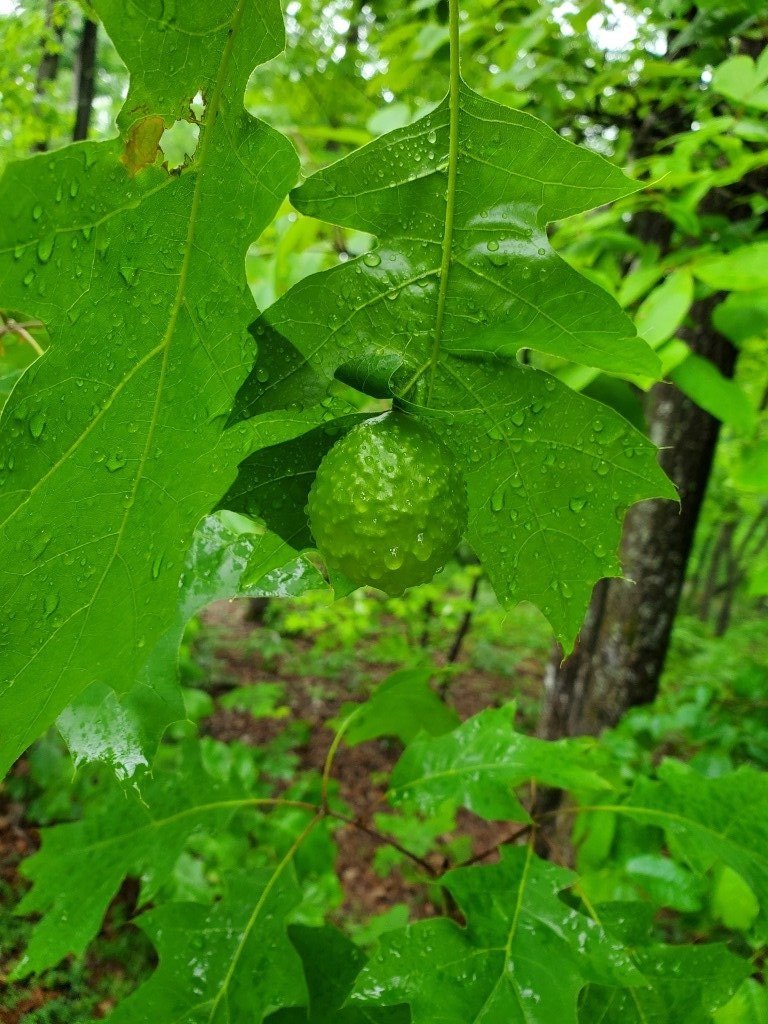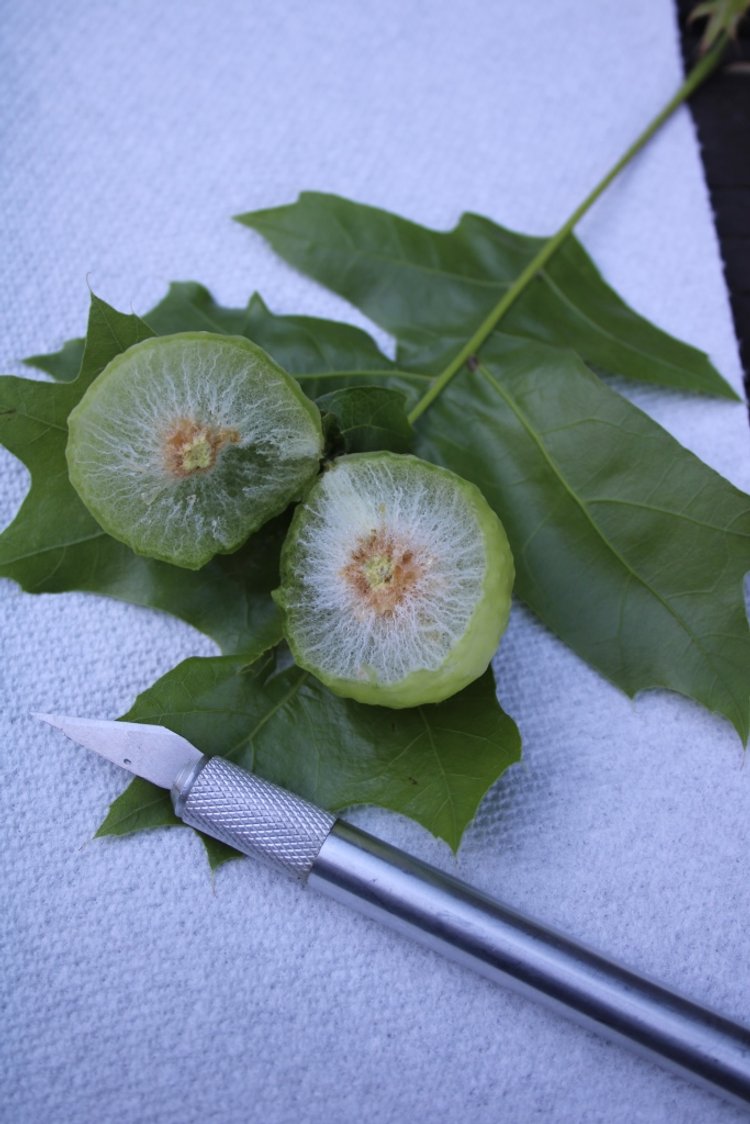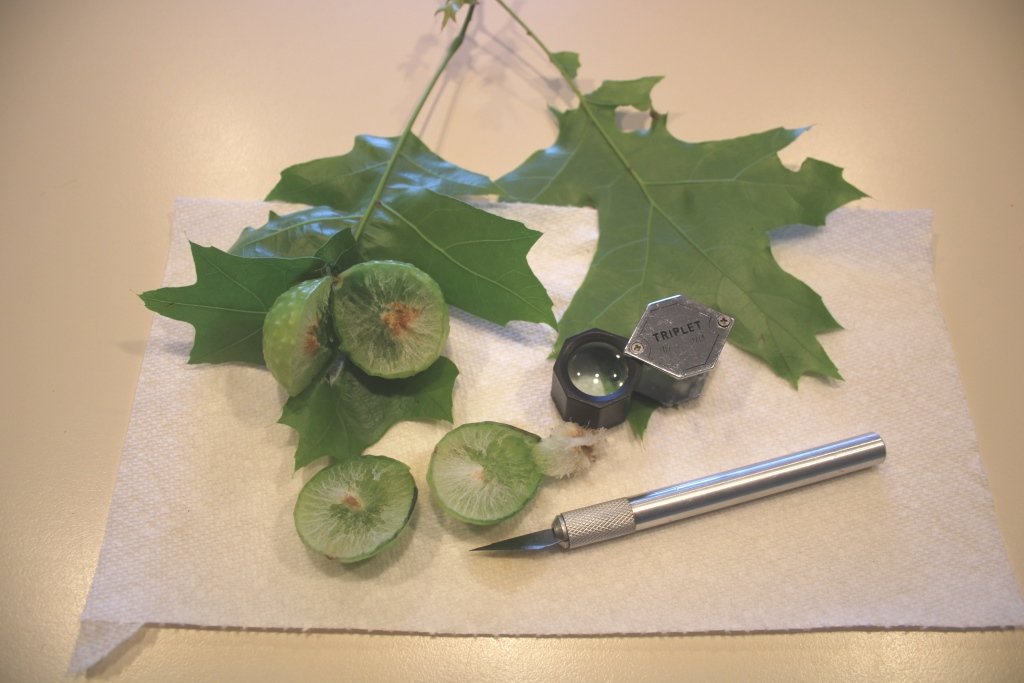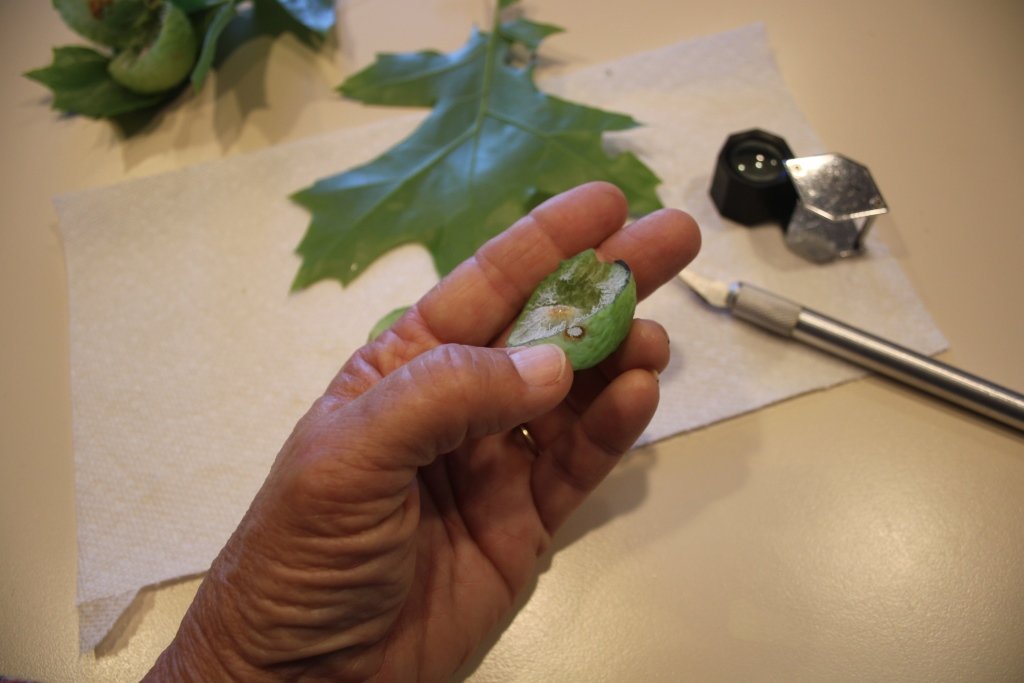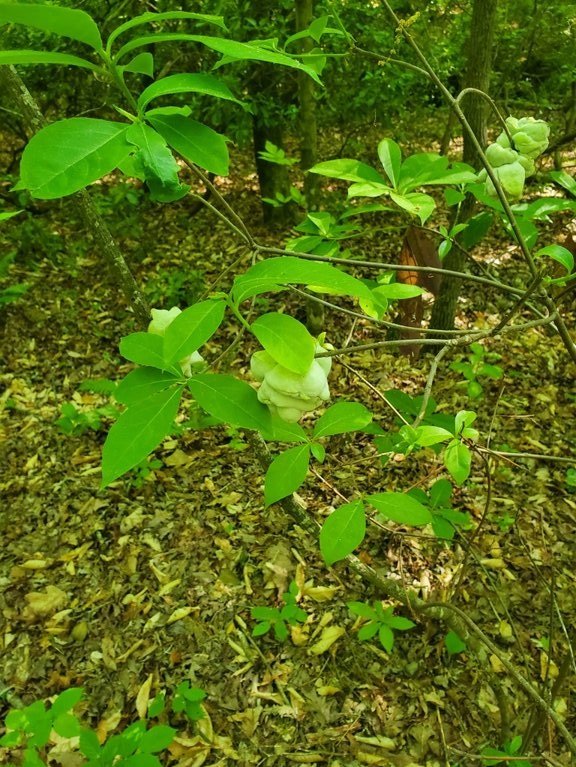I discovered two strange growths on trees in the Mary Snoddy garden this month. Neither were known to me, so I turned to professional sources: Google for the first, and a retired Extension Agent for the second.
Several Oak (Quercus) trees had round, dimpled growths that resembled pale green golf balls. Some were attached to stems, others to leaves. A Google image search identified them as Oak Galls. Galls are a tree’s reaction to damage caused by intruders such as wasps, mites, aphids, or flies. Identifying names include Wooly Oak Galls, Jumping Oak Galls, Spongy Oak Apple Galls, Wool Sower Galls, Roly-poly Galls, Oak Apple Wasp Galls, Gouty Oak Galls, and others. They vary in appearance based on the irritant that generated the tree’s reaction. They do not injure the health of the host tree.
My amateur assessment is that my tree’s galls were caused by a gall wasp, a tiny brown wasp that is not a stinging danger to people. Before they die, the wasps lay eggs in oak tree buds. Eggs hatch into grubs which then produce enzyme secretions, prompting the tree to isolate the damage by forming the gall. Interesting, but I wanted to know what was inside the galls, so I did what any inquiring mind would do. I sliced a couple open. Inside was a fibrous material with a tiny dense section in the middle. Quite a letdown. I was expecting a grub, a baby wasp, or something other than just a gooey orange dot. THEN I got out my handy hand magnifier. There was a tiny white grub inside one. The other was grub-free. Then I noticed the hole on #2, which was evidently an escape hatch. Fascinating stuff, even if it does make one’s spouse hesitant to eat food off the kitchen counter that was used for the gall dismemberment.
The other weird finding in my woods were firm fleshy growths attached to several tree stems. They looked almost like a rose carved from stone. I noticed these a few weeks earlier, when they were a bright yellow color. At the time, I thought they were flower buds of some sort. In this case, Google was of no help so I turned to Mr. John Vining, a retired Polk (NC) Country Extension Director who readily identified my mystery growth as a leaf gall and recommended that I remove the gnarly looking things and burn them or bag them for household trash disposal. He further identified the host plant as Horse Sugar, Symplocos tinctoria. Crushed Horse Sugar leaves have a pleasant smell. For the benefit of readers and in the interest of science (and because I have a goat-like tendency to taste everything) I nibbled a leaf. It was slightly sweet, but not a plant I would choose for a snack. But I’m not a horse – just a curious gardener who is thankful for the enormous knowledge base of state Extension agents. Thanks, Mr. Vining!

